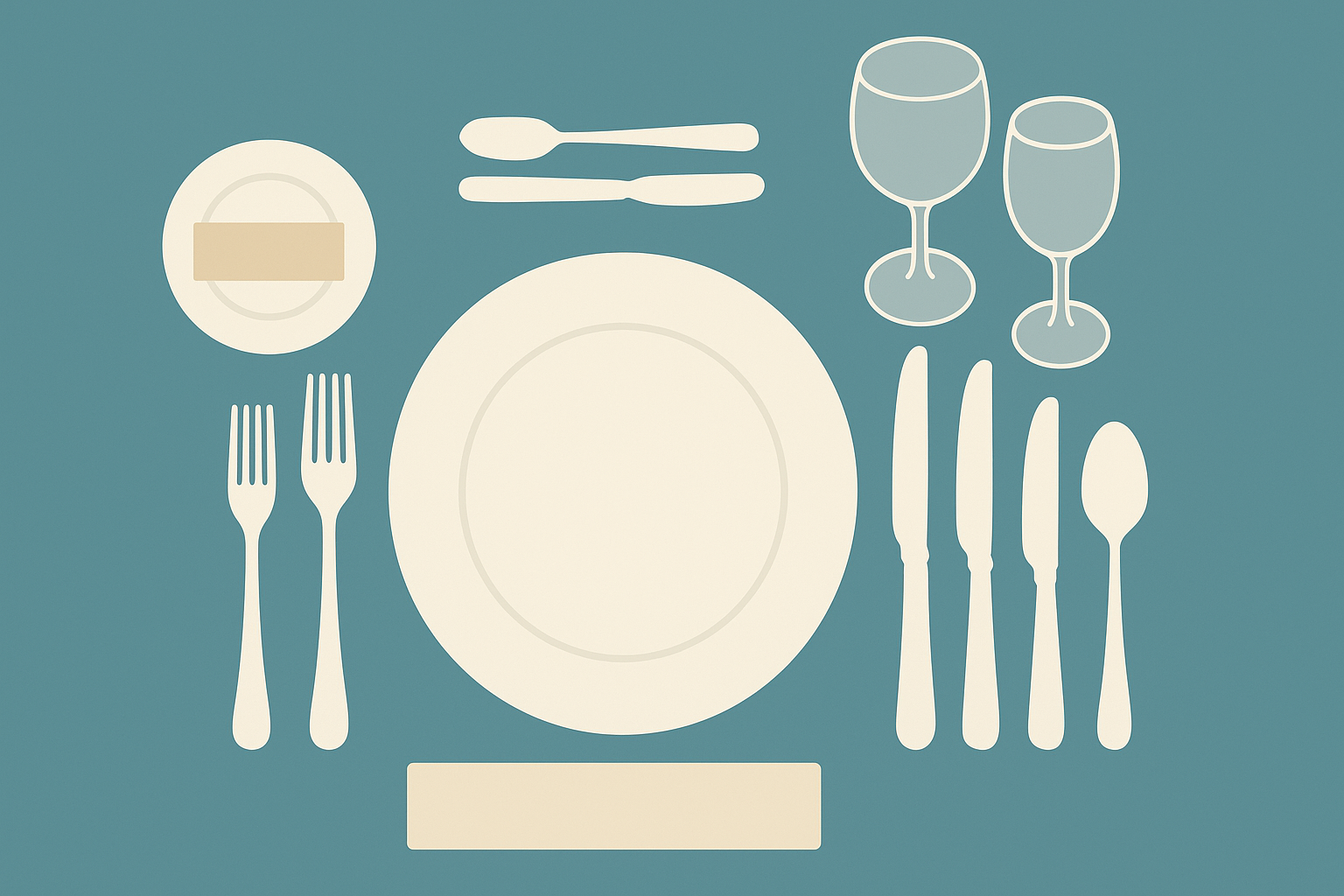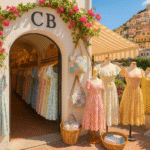The traditional British place setting has, over time, been eroded by the influence of American dining customs. Even respected etiquette guides have published hybrid UK–US layouts mistakenly labelled as British, causing consternation among traditionalists. While dining etiquette evolves with modern life, the British table setting remains one of the most straightforward and logical arrangements — and, its defenders argue, should be preserved.
Key Principles of the British Table Setting
1. Cutlery placement
- Cutlery is positioned only on each side of where the plate will go; nothing is placed above the plate except in special cases.
- Forks go on the left, knives and spoons on the right, all aligned a centimetre from the table’s edge.
- Fork tines always point upwards; knife blades face left; spoon bowls face upwards.
- Forks placed tines-down follow French and Italian tradition, which Britain abandoned around 1750.
2. Bread knife and bread plate
- Traditionally, a small luncheon knife sat on the far right to butter bread, remaining on the bread plate thereafter.
- Modern practice places the bread knife directly on the bread plate, blade pointing left.
- The bread plate is always to the left of the main setting, aligned with the table’s edge.
3. Napkins
- A neatly folded rectangle on the bread plate is standard, unless folded into a decorative design facing the diner.
- Napkin rings are rarely used; napkins in glasses are an outdated 1980s flourish best avoided.
4. Glassware
- Glasses are set above the knives and spoons on the right, arranged in order of use — the closest is used first, the furthest last.
- Coasters are never used on a dining table, regardless of the table’s finish.
- While historically there was a glass for each wine course, modern tables usually feature fewer.
5. Table shape and influence
- British dining tables are usually rectangular, influencing the linear alignment of place settings.
- This contrasts with round tables popular in the U.S., reintroduced into presidential hospitality by Jacqueline Kennedy.
What’s Not Part of the British Setting
- Pudding cutlery above the plate: This is considered incorrect unless following a “nursery” setting used historically in children’s dining rooms.
- Chargers: Large decorative plates popular in America, used under dinner plates, are viewed with scepticism in Britain.
- Centre decorations at formal dinners: At true British state banquets, the centre remains empty except for the napkin — despite tourist display tables at Buckingham Palace showing elaborate centrepieces.
Why It Matters
The British place setting is valued for its clarity and elegance. The “start on the outside and work inwards” rule is easy to follow, avoiding the confusion of American-style layouts that mix cutlery order or position. For enthusiasts, it’s about more than aesthetics — it’s about maintaining a logical, enduring tradition that reflects a national dining identity.
Conclusion: To preserve the character of British dining, reclaim the proper place setting. Align your cutlery, know which side your bread plate belongs on, and set your table with quiet confidence.








